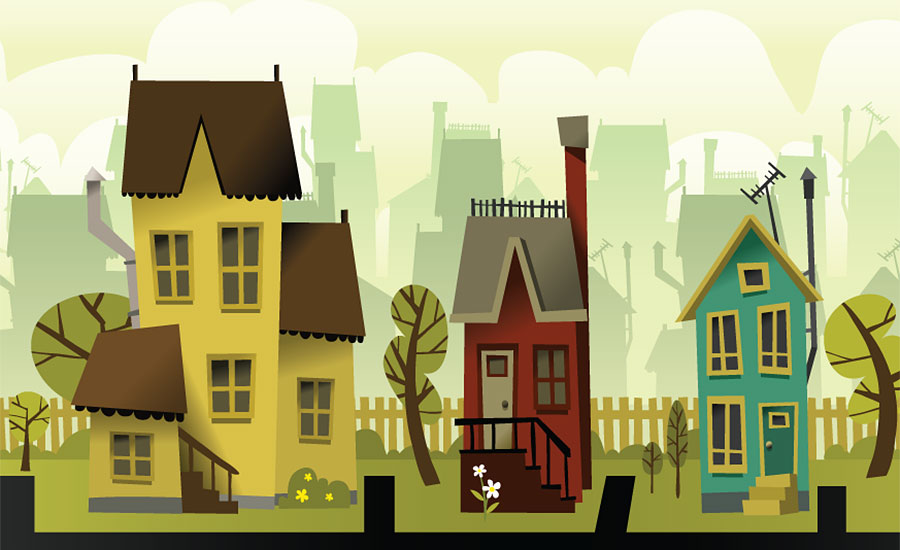An easement is essentially the legal right of a second party to cross or make limited use of another person’s property. It does not grant that person possession of someone else’s land, but it does allow them to use it.
Like any transfer of an interest in property, a grant of easement must be written, unless the easement has existed by prescription or implication. The duration of an easement may be perpetual. A perpetual easement will continue in operation and effect until terminated by an act of the parties or by operation of law.
How is an easement created?
Easements are created when property owners are approached for permission to use their land.
While the owner of the land giving an easement may be compensated at the time of creating the easement, subsequent owners typically are not.
An easement must however only be granted by the owner of the land through which the right of passage is sought.

What is the duration of an easement?
There are two types of easements; In gross & Appurtenant
In gross is an easement that applies to only a particular person you are dealing with at a particular moment, to whom you have given permission or the right to access the property. When that person sells the property, the future owner is not included in the easement particulars.
Appurtenant is an easement that is attached to the land and therefore is part of any sale and therefore is part of any sale and thus transferred to the new owner.
Examples of Easements
- Right of Way where a neighbor may need to pass through the property via a drive way to access the main road or playground, well or lake.
- Utility Maintenance typically granted to utility companies to run power and cable lines on a property. For example, a utility company may retain the right to enter a yard in order to gain access to pipes or underground lines,
- Condominiums or Home Owners Associations (HOA); a HOA agreement may state that community members may be permitted to use a pathway cutting through a private yard or demand that a parcel of land be kept clear for drainage. The legal landowner can prevent anyone except the easement holder from using the land. Easement rights extend to common areas within a community, including pools, parks, tennis courts, or a clubhouse. They can also extend to exclusive elements such as yards or patios (specifically in condominium or townhome developments). A formal agreement regarding any easement will be written into the legal contract at the time of purchase.
An easement can be created in one of the following ways;
- It can be expressly granted
- It may be found to have been granted by implication from the parties conduct
- It may be created by statute or law
- It may be acquired thru long usage in a manner similar to the principles of adverse possession
An easement may not be recognized if it entitles the holder to prevent the owner of the burdened land from doing something on it as an easement because they would unduly restrict a person’s right to enjoy his own land.
An easement does not entitle the holder to take anything from the land at all, but merely to make use of it in some way. An easement may therefore be described as a privilege without a profit.
Somewhat anomalously the right to take water from the land of another (a well for example) is considered to be an easement and not a profit.
Salient features of easements
- There must be a dominant and servient tenement.
- The dominant tenement is the piece of land which enjoys the benefit of the easement and the servient tenement is the land burdened by it. Accordingly easements are rights which are only associated with the ownership of particular land.
- No one can own possess an easement otherwise than in respect of and in amplification of his enjoyment of some estate or an interest in a piece of land.
- Therefore the grant of a privilege over land by an owner to a person to be enjoyed independently of any land they own will be a mere license and not an easement.
A license, only gives permission to do a particular act or series of acts on another’s property. It can be express or implied, written or oral, with or without consideration. As a permissive use, a license can never ripen into a prescriptive easement, no matter how long the use. Additionally, a license is a personal right that is revocable and non-transferable. Termination at the will of the licensor is an important characteristic used to distinguish an easement from a license. A license does not run with the land. A conveyance of land will ordinarily revoke a license but may not revoke an easement. Although a license generally does not carry any enforceable rights, an easement confers definite property rights, which are enforceable against the servient tenant.
Buyers need to be sure, to thoroughly check the title for easements and be cautious if one shows up on the title so that they can be educated before committing.
